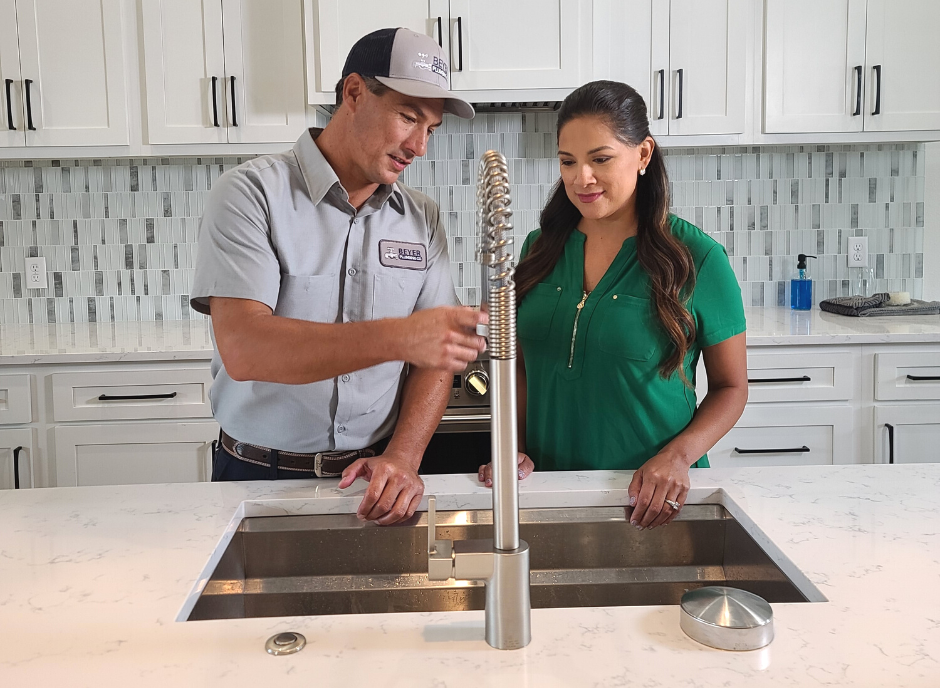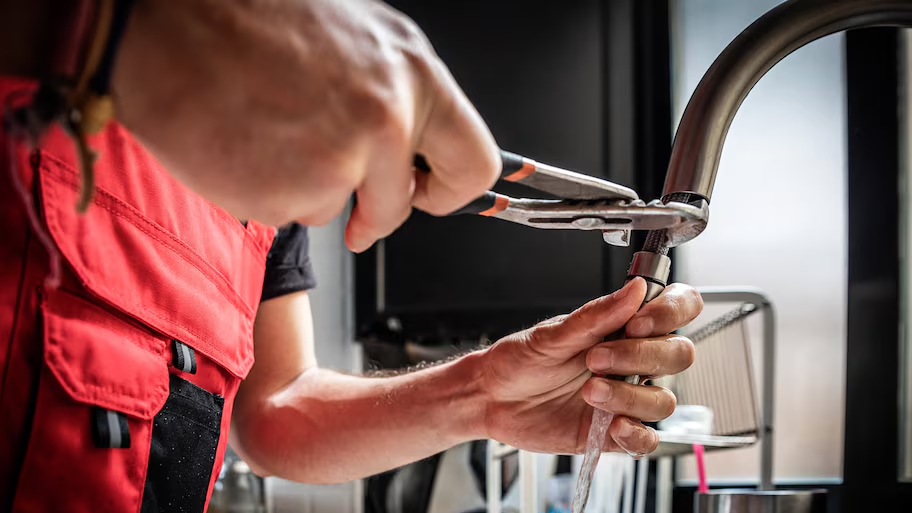What are your thoughts on 4 Common Reasons for a Leaky Faucet?

Trickling taps could seem like a small trouble, but their influence surpasses simply the annoyance of the sound. From drainage to sustaining unneeded economic expenses and health risks, overlooking a dripping faucet can lead to numerous effects. In this post, we'll explore why it's essential to resolve this typical home issue quickly and effectively.
Wastefulness of Water
Environmental Influence
Leaking taps contribute significantly to water waste. According to the Environmental Protection Agency (EPA), a solitary tap leaking at one drip per secondly can squander greater than 3,000 gallons of water per year. This not only pressures water resources however additionally affects environments and wild animals dependent on them.
Financial Expenses
Raised Water Expenses
Past the ecological influence, leaking faucets can inflate water expenses considerably. The gathered wastage over time translates into higher utility expenses, which can have been prevented with prompt repair services.
Possible Residential Or Commercial Property Damage
Moreover, prolonged trickling can bring about harm to fixtures and surfaces surrounding the faucet. Water accumulation can create discoloration, corrosion, and also architectural problems if left unattended, causing extra repair prices.
Health Worries
Mold and Mold Growth
The consistent existence of dampness from a leaking tap produces an ideal environment for mold and mold development. These fungis not just jeopardize indoor air quality yet likewise position health threats, especially for individuals with respiratory problems or allergies.
Waterborne Illness
Stagnant water in leaking faucets can come to be a breeding ground for bacteria and various other pathogens, boosting the risk of waterborne conditions. Pollutants such as Legionella microorganisms flourish in stationary water, potentially leading to severe illnesses when consumed or breathed in.
DIY vs. Expert Fixing
Benefits and drawbacks of DIY Repair Work
While some might attempt to fix a dripping tap themselves, do it yourself repair work come with their very own collection of challenges. Without correct knowledge and tools, DIY attempts can exacerbate the issue or bring about incomplete fixings, extending the trouble.
Advantages of Hiring a Specialist Plumber
Working with an expert plumber makes certain that the underlying reason for the trickling faucet is addressed successfully. Plumbings have the proficiency and equipment to identify and fix tap concerns efficiently, saving time and lessening the risk of additional damages.
Step-by-Step Overview to Dealing With a Dripping Tap
Devices Called for
Before attempting to take care of a leaking tap, gather the required tools, consisting of a flexible wrench, screwdrivers, substitute parts (such as washers or cartridges), and plumber's tape.
Common Tap Issues and Their Solutions
Recognize the sort of tap and the particular issue triggering the drip. Typical problems consist of damaged washers, rusty shutoff seats, or malfunctioning O-rings. Refer to manufacturer guidelines or on the internet tutorials for step-by-step advice on repair services.
Safety nets
Regular Upkeep Tips
To prevent trickling taps, do regular upkeep such as cleaning aerators, examining for leaks, and replacing worn-out parts quickly. Furthermore, think about mounting water-saving tools or updating to a lot more effective fixtures.
Significance of Prompt Repairs
Dealing with leaking faucets as quickly as they're seen stops additional water wastage and possible damages, eventually saving both water and cash over time.
Impact on Residential Property Value
Assumption of Well-Maintained Residential Property
Keeping a residential property in good condition, including resolving maintenance concerns like dripping taps, boosts its viewed worth and desirability amongst possible buyers or occupants.
Impact on Resale Value
Residences with well-maintained plumbing components, including faucets, command greater resale worths in the property market. Attending to dripping taps can contribute to a favorable impact during property evaluations and negotiations.
Environmental Duty
Individual Payment to Conservation
Taking duty for dealing with leaking faucets straightens with wider efforts towards water preservation and environmental sustainability. Every person's activities collectively make a significant influence on preserving valuable sources.
Lasting Living Practices
By focusing on prompt repair work and embracing water-saving behaviors, people add to lasting living techniques that benefit both existing and future generations.
Conclusion
Attending to a leaking faucet surpasses simple comfort; it's an important action towards saving water, decreasing financial prices, and securing health and wellness and building. Whether through do it yourself repair services or specialist support, taking action to repair trickling faucets is a little yet impactful way to promote accountable stewardship of sources and add to a healthier, a lot more lasting future.
How to Fix a Dripping or Leaky Faucet
A leaking faucet is one of the most common problems that homeowners encounter, but it being commonplace doesn’t make it any less annoying. The constant drip drip drip of a leaking bathtub faucet, showerhead, or sink tap can disturb your home’s serenity. Left neglected, a dripping faucet can also result in higher water bills and discoloration or mold growth in your sink or plumbing fixtures.
Fortunately, you don’t have to be a trained plumber to know how to stop a dripping faucet. With some basic tools, replacement parts, and a little patience, leaky faucet repair is a breeze. In this article, we’ll explain what causes dripping faucets and how you can fix them.
What Causes a Leaking Faucet?
Kitchen and bathroom faucets come in all manner of designs, but most involve some combination of valves, O-rings, seals, and washers. The O-ring is usually the weakest link, but any one of these pieces can wear down over time. Heat, moisture, temperature fluctuations, minerals, mold, and movement can contribute to warping and corrosion, breaking the watertight seal. This just comes with the territory of being a homeowner. Everything is always subject to wear and tear, and some component parts of your appliances and fixtures need to be replaced on occasion. At least replacement O-rings are cheap!
More rarely, dripping faucets can be a symptom of excessively high water pressure. Were this the case in your home, you would probably notice that the leak is not isolated to one faucet. Water pressure issues are harder to resolve on your own. We recommend contacting a professional plumber if you suspect your water pressure is too high.
How to Fix a Dripping Faucet
Pipe wrench or monkey wrench Allen wrench set Screwdrivers Old towel or rag Shut off the water.
Before you do anything, you need to turn off the water to keep from drenching your kitchen or bathroom. You should find a valve under the sink and against the wall. Once you’ve turned this valve, try turning the faucet on to confirm that the water source has been cut off.
If you can’t locate your local valve for the faucet you’re working on, you can always shut off the water to the house at the main valve. Of course, this will prohibit anyone from using the sinks, showers, or toilets while you’re working on the faucet that’s giving you trouble.
Plug or block the drain.
You’ll be disassembling the faucet and removing some small bits of hardware. Plug the drain with a stopper or rag to avoid the possibility of a small screw falling into your P-trap.
Take apart the faucet assembly.
There are several varieties of kitchen and bathroom faucets, each with its own manner of assembly. For detailed instructions on how to disassemble your faucet, you can refer to the fixture’s manual or contact the manufacturer. If you know whether you have a ball, disc, cartridge, or compression faucet, you can find detailed schematics online.
In general, you need to begin by removing the faucet handles. You might notice a small screw that you’ll need to remove with a screwdriver or Allen wrench. If you don’t see any visible securing hardware, it’s likely hidden under a decorative cap that can be unscrewed or popped off with flathead screwdriver.
Remove each piece methodically, consulting a schematic when necessary. Take notes or arrange the pieces in such a way to make it easier to correctly reassemble the faucet later.
Remove the cartridge.
Once you’ve removed the handles and securing hardware, you should be able to remove the valve cartridge or stem. Some cartridges will slide right out. Other faucet models will require you to loosen a nut with a pipe wrench before you can remove the valve stem.
Examine the exposed hardware.
With the cartridge or stem removed, inspect the component parts. Check the rubber O-rings for wear and tear. Also examine the seat washer for corrosion or other damage. These pieces are usually the responsible parties for a dripping faucet, but it’s worth inspecting the other component parts while you have the faucet disassembled.
Find replacement parts.
Once you’ve identified which faucet component has failed, find an identical replacement. Your local hardware store should have O-rings, seat washers, and other standard components in stock. If you have a luxury or uncommon faucet, you may have to contact the manufacturer for a replacement part.
It’s a good idea to take your old parts with you to the hardware store so you can compare them with the store’s inventory and be sure you’re purchasing the correct replacement.
Reassemble the faucet.
With your new parts in hand, reconstruct the faucet and handles. Don’t be tempted to overtighten screws or nuts. You might think this could create a better seal, but it can instead damage or bend a delicate part of the assembly and create a new problem for you.
Turn on the water and test the faucet.
The only thing left to do is test your work. Unplug the sink, turn the water back on, and try the faucet. Congratulate yourself on a job well done!
https://www.libertyhomeguard.com/how-to-fix-a-dripping-or-leaky-faucet/

Do you appreciate reading up on Water Dripping from Faucet: Why and How to Fix? Put feedback down the page. We will be glad to know your opinion about this blog entry. Hoping that you come back again in the future. Enjoyed reading our article? Please share it. Let another person locate it. I appreciate your readership.